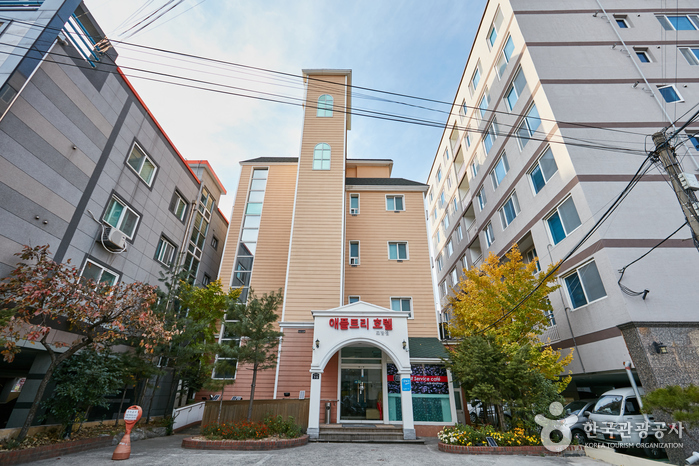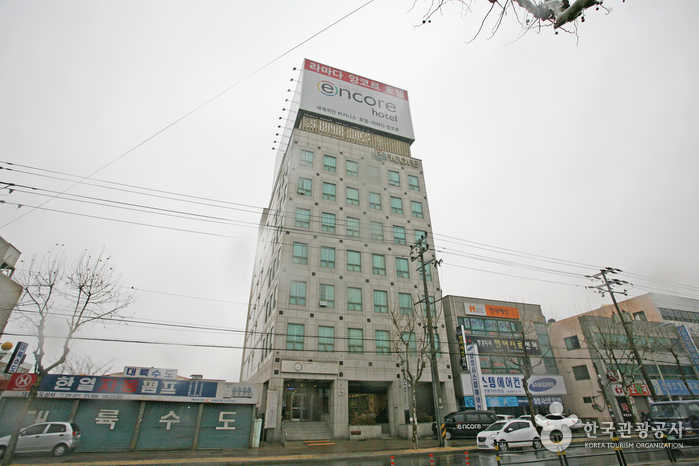Village Traditionnel Yangdong [Patrimoine mondial de l'UNESCO] (경주 양동마을)
0m 18816 2023-01-13
134, Yangdongmaeul-gil, Gangdong-myeon, Gyeongju-si, Gyeongsangbuk-do
+82-54-762-2630
Le Village Traditionnel Yangdong à Gyeongju est le plus grand village traditionnel de Corée, affichant la culture de la Dynastie de Joseon et la beauté naturelle des environs. Grâce à ses nombreux héritages culturels, incluant des trésors, des trésors nationaux et des matériaux folkloriques, le village entier fut désigné en tant que site d’héritage culturel. De nombreuses personnes ont visité ce village pour voir la profusion de ces derniers ainsi que ses environs pittoresques. Le Prince Charles l’a visité en 1993.
Le mont Seolchangsan et ses quatre pics peuvent être aperçus derrière le village. Approximativement 160 maisons anciennes, et des maisonnettes aux toits de chaume de 500 ans d’âge sont nichées au sein de la vallée. 54 de ces maisons ont plus de 200 ans et ont été excellement préservées dans leur état d’origine, offrant une rare opportunité de voir en personne une variété de maisons traditionnelles coréennes.
Hyangdan [Korea Quality] / 향단 [한국관광 품질인증]
359.84815559504216m 42643 2020-09-08
121-83, Yangdongmaeul-gil, Gangdong-myeon, Gyeongju-si, Gyeongsangbuk-do
+82-10-6689-3575
Hyangdan House (Treasure No. 412) is located in the famous village of Yangdong (Gyeongju City), which has been designated as National Folklore Cultural Heritage No. 189 and recognized as a Historic Village of Korea, and consequently listed as a UNESCO World Heritage Site. The head houses of the Gyeongju Son clan and the Yeogang Yi clan are situated in this traditional village, along with typical hanok houses of Joseon noblemen and the thatched houses of commoners. Among the houses in the village, Hyangdang House stands out as it is located around Mulbong Hill. The house was built in 1540 by King Jungjong (r. 1506-1544) for the mother of Yi Eon-jeok (pen-name: Hoejae, 1491-1553). It originally measured 99-kan (a unit of measurement referring to the distance between two columns), but part of the house was destroyed during the Korean War (1950-53), leaving only 56-kan of the original structure. Hyangdan House was built in close harmony with nature, so its structure is distinct from that of other hanok houses. As it was built on a slope, the x_heights of its various structures differ considerably. For instance, the daemungan (gate building) of the haengrangchae (servants’ quarters) was built by placing the foundation stones on the incline and then building the gate on top of them. In particular, there are no staircases leading up to the main gate at the front, but there is a side door adjacent to the gate through which one can enter the house. In addition, the sarangchae (men’s quarters) located behind the haengrangchae on the higher ground can be reached via the staircases. The other structures, such as the kitchen, anchae (women’s quarters), and geonneonbang (a room opposite the main living room) are located at different levels, protecting them from exposure to the outside. Therefore, thanks to the high position of the house, it is luminous and commands an excellent view. Furthermore, the anchae is situated in the middle of the house, which enables the occupants to reach the rest of the house easily. The anbang (main living room) connects to the daecheong (main floored room) toward the south. Hyangdan House runs a variety of experience programs such as a woodblock printing program in which participants can write a letter using woodblock printing on hanji (traditional Korean paper handmade from mulberry tree); a traditional etiquette program including the wearing of hanbok (traditional Korean clothes); a tea ceremony with lotus tea; and a natural dyeing program in which participants learn how to use natural materials to dye fabric (bag, clothes, etc.). It is recommended to book the desired experience program when reserving a room at the guesthouse. The house comprises four guestrooms in the anchae, three rooms in the additional building (busokchae), and two rooms in the haengrangchae, all of which are often fully booked.
Robot Life Museum (로보라이프 뮤지엄)
6.7 Km 1244 2019-03-26
39 Jigok-ro, Nam-gu, Pohang-si, Gyeongsangbuk-do
+82-54-279-0427
Le musée Robot Life Museum est situé au rez-de-chaussée de l’institut de recherche coréen sur la robotique. Il abrite une exposition et un hall d’activités sur l’intelligence robotique, un hall promotionnel KIRO, un café robot et une salle d’éducation sur l’intelligence robotique. Les visiteurs peuvent y découvrir la manière dont l’intelligence artificielle peut améliorer les logements de demain, ainsi que le futur de l’environnement robotique. De nombreuses activités permettent aux visiteurs de découvrir les nombreuses fonctionnalités des robots d’aujourd’hui et de demain.
Ecole confucianiste Oksanseowon [Patrimoine Mondial de l'UNESCO] (옥산서원)
8.2 Km 20657 2020-12-04
216-27 Oksanseowon-gil Angang-eup Gyeongju-si Gyeongbuk
+82-54-779-6100
L'école confucianiste de Gyeongju (monument historique n ° 525) a été construit pour commémorer les réalisations scientifiques et les vertus du confucianiste Yi Eon-jeok (1491-1553). Construit en 1572 dans la cinquième année du règne du roi Seonjo, l'école a été nommé Oksanseowon la septième année du règne du roi. L'académie est entouré par les montagnes Jaoksan, Dodeoksan, Hwagaesan, et Muhaksan. L'académie abrite 4111 livres de 866 types, y compris la Samguk Sagi (Histoire des Trois Royaumes).
Terminal de Bus Interurbain Pohang
8.7 Km 41387 2016-05-27
579-13 Sangdo-dong Pohang-si ongsangbuk-do
Appletree Hotel
8.9 Km 17634 2021-04-09
7-5, Jungheung-ro 100beon-gil, Nam-gu, Pohang-si, Gyeongsangbuk-do
+82-54-241-1234
Apple Tree Hotel is a business hotel located in Pohang, Gyeongsangbuk-do. It's a five-story building with a total of 28 Double, Twin, and Ondol Rooms. Non-smoking rooms are available, and free breakfast is served from 7:00am to 9:00am. The hotel is a mere 5-minute walk from Pohang Bus Terminal and only a 10-minute ride from Pohang Airport. Nearby tourist attractions include Guryongpo and Homigot Sunrise Square. The most famous dish in Pohang is "Guryongpo Guamaegi,” which is half-dried mackerel pike or herring.
BENIKEA Hotel Pohang (베니키아 호텔 포항)
10.7 Km 13366 2019-11-12
128, Jungang-ro, Nam-gu, Pohang-si, Gyeongsangbuk-do
+82-54-282-2700
BENIKEA Hotel Pohang has 90 simple but stylish guestrooms each outfitted with a shower, AC, wireless high-speed internet, high-quality linens, an LCD TV, and a phone. Coffee and traditional tea are provided and each room is soundproof, ensuring guests a pleasant night’s sleep.
The business center has a state-of-the-art meeting room and guests can enjoy hotel services such as a simple breakfast meal or drinks. From the HUB, a multi-purpose complex area located at the first floor, guests can engage in all kinds of activities ranging from having breakfast or a cup of coffee to conducting business transactions.
Terminal des bus express de Pohang
10.7 Km 58517 2011-02-18
33 Haedo-dong Pohang-si Gyeongsangbuk-do
Marché Jukdo à Pohang (포항 죽도시장)
11.1 Km 7674 2023-01-02
13-1, Jukdosijang 13(sipsam)-gil, Buk-gu, Pohang-si, Gyeongsangbuk-do
+82-54-247-3776
Le marché de Jukdo à Pohang n’était à l’origine qu’un petit rassemblement de marchands locaux dans les roseaux et les zones humides du port intérieur de Pohang. Plus de cinquante ans plus tard, il est à présent devenu l’un des plus grands marchés de la côte Est de la province du Gyeongsangbuk-do.
A seulement 500 mètres de Ogeori (qui est le coeur de Pohang), les visiteurs trouveront le marché aux poissons de Jukdo – le plus grand marché ouvert de l’Est. Dans ce marché de gros de produits de la mer, 200 boutiques de poisson cru vous offrent les meilleures prises de la région. Les restaurants à proximité proposent des plats de sashimi de qualité à des prix incroyablement bas, et en hiver, les visiteurs peuvent déguster le Gwamegi, une spécialité de la région de Pohang.
Gare de Pohang (포항역)
11.2 Km 2043 2016-01-11
328-71 , Daljeon-ro, Buk-gu, Pohang-si, Gyeongsangbuk-do
+82-1544-7788
La gare de Pohang a ouvert ses portes en 1981 sous le nom de la gare de Botong,
et à partir du 2 avril 2015 a nommé la gare de Pohang. La gare
est prête à jouer un rôle de plaque tournante pour les lignes
du Sud de la côte Est.
![Village Traditionnel Yangdong [Patrimoine mondial de l'UNESCO] (경주 양동마을)](http://tong.visitkorea.or.kr/cms/resource/44/2654744_image2_1.jpg)
![Hyangdan [Korea Quality] / 향단 [한국관광 품질인증]](http://tong.visitkorea.or.kr/cms/resource/07/2579207_image2_1.jpg)



 Français
Français
 한국어
한국어 English
English 日本語
日本語 中文(简体)
中文(简体) Deutsch
Deutsch Español
Español Русский
Русский